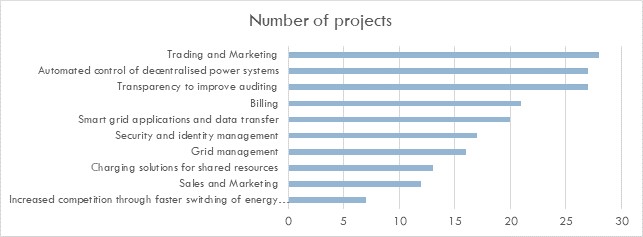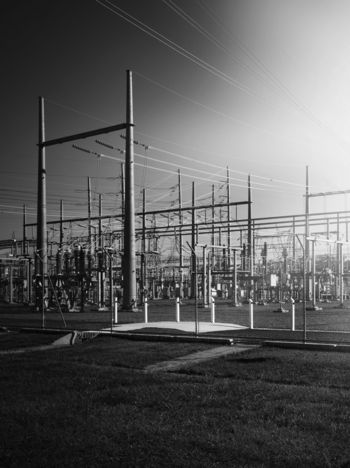The Role of Blockchain Technologies in Power Markets
Block chain technologies offer an exciting opportunity in decentralised trading systems. Their rise has coincided with power systems becoming more decentralised and a world in which consumers can collectively control quite large energy sources. They offer the opportunity for consumers to trade their power sources and their load effectively with the potential to reduce their energy costs.
Convenor
(AU)
D. BOWKER
Secretary
(CA)
DR F. MOHAMMADI
A. AL GARNI (SA), A. BARAKAT (AU), A. ALONSO (CL), B. KAPOOR (AU), D. BOSNJAK (HR), E. CARDOSO (BR), E. CUADROS (PE), G. RAJAPPAN (US), G. THORPE (AU), H. DAVIS (US), H. AGABUS (EE), H. MORALES (CL), J. MILOSAVLJEVIC (RS), J. DURAN HERNANDEZ (CO), J. BETANCUR (CO), M. DE ARAUJO (BR), N. AL-SHAHRANI (SA), N. TACKA (US), P. AGARWAL (IN), R. HYTOWITZ (US), S. JAIN (IN), S. LI (US), T. BAKER (AU), T. SAWA (JP), U. CALI (NO), V. FRANCISCO (AU), V. TAN (AU), V. VADLAMUDI (NO), V. BEREZOVSKY (RU), Y. ALMARWAN (SA), Y. ZHILKINA (RU)
Scope and Methodology
This Working Group undertook two streams of work.
The first phase, Exploration, was an assessment of the potential value and uses of block chain technologies in energy markets and power systems based on a literature survey. This included an explanation of how they work and some simplified examples of possible applications. Specifically, this stage:
- gathered information on the characteristics of distributed ledger products;
- considered the range of potential applications in electricity both for financial and physical parameters;
- considered the implications for the electricity industry: efficiency and scope for new approaches with vastly more transactions - vs - disruption and the risk of being bypassed.
The second phase, Assessment, was a review of a range of trials and examples of early adoption of projects that use blockchain, to document their value and practicality. During the project, a set of assessment criteria was developed and applied to the trials and examples. SC D2 were represented in this WG as an observer.
Description of the TB
The TB has an Executive summary which summarises the findings.
Chapter 1 provides background on the transition which energy market systems are undergoing and some basic blockchain fundamentals including cryptography and hash functions.
Chapter 2 explores the different ways in which consensus, a central element of blockchain technology, can be achieved. It also describes the roles of private and public blockchains and discusses two of the most common blockchain frameworks.
Chapter 3 considers some of the shortcomings in current market designs which make them unsuitable for a transformed market with digitalisation, high levels of renewables and decentralised generation.
Chapter 4 describes how new technologies including blockchain can address some of these issues.
Chapter 5 describes the criteria which were developed for selecting projects for assessment and the approach used for assessing projects.
Chapter 6 presents a summary of the data that was collected and several graphs which analyse the data.
Finally, there is an attachment which has a collection of useful references for people who want more information on blockchain. The second attachment is the project assessment sheet which was used for each of the 37 projects selected. This is followed by an extensive bibliography of texts which have been refenced in the TB.
Conclusions and main follow up
The Working Group made the following observations on this small sample of 37 projects which were assessed. It should be noted that there is no claim being made that these are a representative sample. One of the key results is an analysis of where blockchain has been used in the selected projects. The graph below shows the distribution.

From this analysis and other data, the main observations are:
- The principal functional areas where blockchain is used are:
- trading and marketing;
- automated control of decentralised power systems; and
- transparency to improve auditing.
- The major blockchain frameworks used are Ethereum (42%) and Ecochain (24%)
- Projects commissioned earlier used Ethereum but more recent systems were using IBM Fabric
- The most common consensus mechanism was Proof of Stake
- The number of customers using the systems was small with the most common size being 5-10 users
There appears to be a significant potential for the application of blockchain technologies to certain areas of energy markets. It is likely that a distributed technology like blockchain would be useful as power systems become more distributed with an exponential rise in the number of players in the market and the number of technologies employed. One significant technical issue is achieving the transactional speed which would be required for a widespread implementation of blockchain into energy markets.
It is proposed to follow up this work in a new Working Group with a more in-depth look at the potential applications for blockchain in the area of energy trading.



